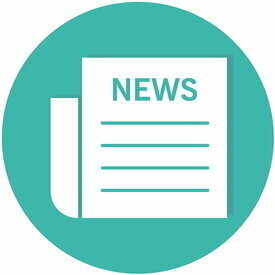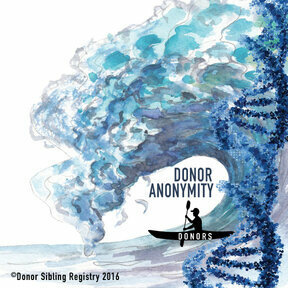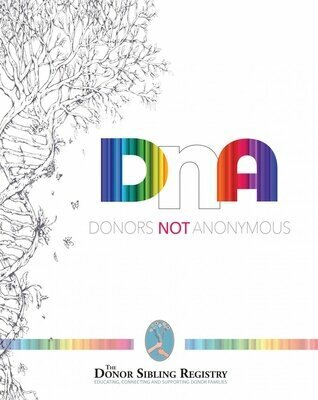DNA Testing
DNA testing is increasingly matching donor-conceived people with their genetic relatives. In 2004, Ryan Kramer (at age 14) swabbed his cheek and submitted his DNA for testing; in 2005 (at age 15), he was the first donor-conceived person to identify his donor through DNA testing.
Information About DNA Testing

DNA is a game-changer in the donor-conception industry. DNA testing is connecting previously unknown genetic relatives and has ended the long-standing standard of donor anonymity.
"I was a donor in my early 20s when I needed some extra cash. I evaluated donation and decided to go forward, it was helping people. I never gave it much more thought in the decades since, until one of the children contacted me. She found me and two half-siblings via a DNA test. I had gifted my elderly parents a DNA test last year, never thinking this would happen."



Industry Perspective

June 2016: A letter from the Editor-in-Chief of Human Reproduction (Note that this isn't a "2016" issue ... it's what we've been saying since 2005!):
In 2011, Ryan and Wendy Kramer sat in Dr. Watson's office and chatted about DNA, science, politics, religion, life, and even about finding your formerly anonymous sperm donor through DNA. It was fascinating, and an amazing privilege. Wendy had worked under Dr. Watson at the Cold Spring Harbor Laboratories when she was in college.

DSR Booklet
DSR perspective: Connecting on the DSR vs. on DNA Websites
Half-siblings headed to the March for Science on April 22, 2017!

News Articles

23andMe has filed for Chapter 11 bankruptcy protection and its co-founder and CEO has resigned as the struggling genetic testing company continues its push to cut costs, but what does that mean for you and your data?
Genetic influences on behavioral traits are not immutable or deterministic.
The mechanisms through which genetic variants are associated with social and behavioral outcomes is poorly understood and are not divorced from environmental or social processes.
Genetic variants identified by GWAS have miniscule effects, typically ranging from .01-.03%.
PGS for complex behavioral traits are not currently useful predictors of individual outcomes–i.e., polygenic scores are not “fortune-tellers.”
The results of genomic studies listed here do not provide the genetic bases of ancestral, racial, or ethnic differences in human behavior.
Genetic ancestry is not synonymous with the socially defined concept of race.
Almost all genomic studies listed here were conducted in populations of European descent and cannot be meaningfully extrapolated to other populations.
Even if you were switched at birth, you'd still be the same person, says Robert Plomin. Because it's mostly your DNA that makes you the individual that you are.
DNA tests are cheap and ubiquitous. For some donor-conceived people, they can unearth long-buried truths about their ancestry — and lead to unorthodox reunions.
Fifteen years ago, a boy finding his anonymous sperm donor was a sensation. Now it's commonplace.
"The Donor Sibling Registry connects families who use the same donor, so I’ve known about most of my half-siblings since I was two. We all live in different places, but we keep in touch over social media and in a group chat. Last January, things changed for our group. The genetic testing site 23andMe matched some of us with Donor 893."
When you match on a DNA site, you often don't know if your 15%-30% relative match is a half-sibling, an aunt/uncle, or a grandparent until you reach out to determine the relationship. Also, when people don't reach out, it's frequently assumed they don't want contact. It's extremely important to give your DNA match the opportunity to make the decision about whether to connect, as well as to define the relationship.
"Thousands of children conceived by anonymous sperm donation still have no right at all to know their biological fathers. But they are turning to DNA sites to track them down — and Wendy Kramer has made it her very personal mission to help."
"DNA testing and the internet have made donor anonymity almost impossible nowadays."
(starts at 1:15)
"The surge in popularity of services like 23andMe and Ancestry means that more and more people are unearthing long-buried connections and surprises in their ancestry.... It’s all about the desire to fill in empty spaces, to find connection, to know more about yourself. For children cut off from their origins because of a closed adoption or an unknown sperm or egg donor, those answers are harder to get. And if a person’s origin was a secret that they discover later in life, ... they may feel that everything they knew about themselves and their roots was a lie."
"All Ryan Kramer had to do was to swab his cheek and embark on nine days of genealogical research to identify his biological father, a man who thought he would remain anonymous when he donated his sperm and never took a DNA test himself. The year was 2005, when consumer DNA tests were in their infancy. Kramer was 15. Thirteen years later, the explosion of individual DNA test kits has opened the floodgates for people who were born from sperm or egg donations. Increasing numbers of people are using the technology to uncover the identities of their donors."
This is a great article about nature and nurture and what makes us who we are: "One of the country’s top psychologists and behavioural geneticists, Professor Robert Plomin, of King’s College London, offers an emphatic conclusion. It is drawn from 45 years of research and hundreds of studies. He says the single most important factor in each and every one of us — the very essence of our individuality — is our genetic make-up, our DNA. The basic building blocks of life that we inherit from our parents are what determine who we are — not how much they loved us, read us books or which school they sent us to. DNA accounts for at least half the variance in people’s psychological traits, much more than any other single factor. Put simply, ‘nature’ trumps ‘nurture’ every time, and not just marginally, but by a long, long chalk. Our DNA, fixed and unchangeable, determines whether we have a predisposition not just to physical traits — from how tall we are to how much we weigh — but also to our intelligence and our psychology, from a tendency to depression to having resilience and grit."

Sitting in her doctor's office one day, Wendy Kramer picked up a copy of Genome Magazine and thought it was very interesting and that it related to a lot of what we do at the DSR. She contacted the magazine to ask if they could write an article about the DSR, and they said they already had an article underway about the search for family with DNA testing. They were interested in adding a segment on the DSR and asked for a specific story. Wendy asked Jen Moore if she would tell her story to the writer, and voila — the DSR was featured in Genome Magazine's Winter 2015 edition. Genome Magazine is in doctors' offices across the country, and anyone can request a free subscription.
A great how-to, step-by-step document by DSR member Stephen T. Nelson on DNA testing and searching for your genetic family.
Ryan's biological father speaks publicly for the first time about being found through DNA testing.
by Misha Angrist: "An article in Science last month raised doubts about the privacy of volunteers who hand over their genetic data (M. Gymrek et al. Science 339, 321-324; 2013). 'Oh my God, we really did this,' said Yaniv Erlich of the Massachusetts Institute of Technology in Cambridge to The New York Times, after his group managed to cross-reference information from public databases to put names to samples of DNA donated to research. Yet what the scientists did is not shocking or all that new. The DNA re-identification bogeyman has lurked at the door for years. The warning signs were there in 2005 when a precocious 15-year-old boy called Ryan Kramer found his sperm-donor father. Just as Erlich and his colleagues would do years later, Kramer used a combination of Y-chromosome data — his own in this case — and genealogical searching of public records to track down a donor dad who had almost certainly been promised anonymity by the sperm bank."
DNA Advice

In addition to posting on the Donor Sibling Registry, people can also submit their DNA samples to Ancestry.com or 23andme (even though they filed for Chapter 11 bankruptcy in 2025). Half-siblings will have roughly 25% identical DNA; donor-conceived people and their biological parent will share around 50% of their DNA. If two people are in fact half-siblings (or parent/child), they will see each other in their list of matches. After you get your DNA results, upload your raw data to gedmatch.com and Family Tree DNA (free). Doing so makes you findable by people who tested with Ancestry, 23andMe, or Family Tree DNA. Read the articles on this page about how others have found donors and half-siblings via DNA testing. Sometimes, connecting with close or even distant relatives can lead you to your half-siblings and/or your donor.
The DNA companies cannot be relied upon to send you emails when a close relative match happens; you must check the websites regularly!
The DNAAdoption.org website has a lot of valuable information regarding DNA testing.

Reaching out to your DNA connections: sample letters
The following sample letters provide some ideas for reaching out to new DNA matches. These examples are meant for people to pull bits and pieces from, adding their own information and communication style as appropriate.
Half-sibling match: Wondering what to say to your new DNA half-sibling match when this news might be a shock to them? Here is some sample verbiage for reaching out to a new half-sibling that you have matched with via DNA testing who might not know that they were donor-conceived:
Hi, it looks like we’re half-siblings! I realize that this news might be confusing or even shocking to you, and I hope that you're open to learning more about the situation and about your extended "donor-family." We're both children from a man who donated his sperm. I’ve known that I was donor-conceived since I was [*] years old, and I have been curious about my donor and my potential half-siblings since then. And now, with the advent of commercial DNA testing, more and more people are learning that they are donor-conceived. I realize that this news may come as surprise to you, and I realize that this may be a sensitive or private subject within your family, so I want to assure you that I will be extremely respectful of your privacy regardless of how you may wish to connect. I also understand that you might need some time to process this new information. Please know that all the emotions you might be feeling right now are completely normal. It's not uncommon to feel confused, relieved, excited, sad, or angry — sometimes all at the same time!
You may be wondering why this information was withheld from you, so it's important to try and understand why some parents keep this "secret." Many parents were advised by doctors to never tell. In addition, some parents are fearful that the news might create discourse within the family, negatively affect the relationship with the dad, or upset or anger the child. Most parents were never adequately counseled with regard to dealing with infertility — so sometimes the shame of infertility turns into the shame of donor conception. But I assure you, there is nothing to be ashamed of, and your parents can walk beside you as you explore this new reality. While fear can be a powerful emotion and the reason the secret was kept, honesty and truth can be much more powerful and positive!
I joined the Donor Sibling Registry website (https://www.donorsiblingregistry.com) to make myself available for mutual consent contact. There are [**] other donor-conceived people on that website who are also your half-siblings! They are a great bunch of people, and we all welcome you into our group with open arms.
If and when you’re ready, I’d be happy to discuss it all with you! In the meantime, I’d encourage you to check out the DSR's book for adult donor-conceived people and the Donor Sibling Registry website, which is an excellent resource for exploring research and reading personal stories about establishing these new family connections.

For donors connecting to offspring: Wondering what to say to your new DNA offspring match when this news might be a shock to them?
Hi, it looks like we’re very closely related! Back in the [1990s], I was a college student and also a sperm donor at the [***] sperm bank.
I realize that this news might be confusing or even shocking to you, and I hope that you're open to learning more about the situation and about your extended "donor-family." When I donated, I was assured (as were the parents) that there would always be anonymity. But now, with the advent of commercial DNA testing, more and more people are learning that they are donor-conceived, and more donors are being found via the DNA websites. I realize that this news may come as surprise to you, and I realize that this may be a sensitive or private subject within your family, so I want to assure you that I will be extremely respectful of your privacy regardless of how you may wish to connect. I also understand that you might need some time to process this new information.
Please know that all the emotions you might be feeling right now are completely normal. It's not uncommon to feel confused, relieved, excited, sad, or angry — sometimes all at the same time!
If you didn't already know you were donor-conceived, you may be wondering why this information was withheld from you. It's important to try and understand why some parents keep this "secret." Many parents were advised by doctors to never tell. In addition, some parents are fearful that the news might create discourse within the family, negatively affect the relationship with the dad, or upset or anger the child. Most parents were never adequately counseled with regard to dealing with infertility — so sometimes the shame of infertility turns into the shame of donor conception. But I assure you, there is nothing to be ashamed of, and your parents can walk beside you as you explore this new reality. While fear can be a powerful emotion and the reason the secret was kept, honesty and truth can be much more powerful and positive!
I joined the Donor Sibling Registry website (https://www.donorsiblingregistry.com) to make myself available for mutual consent contact. There are [**] other donor-conceived people on that website who are your half-siblings! I have met a few of them, and they’re a great bunch of people. We’d welcome you into our group with open arms.
I have some medical and ancestral information that you might find interesting. Also, you have genetic grandparents who would very much like to meet you. If and when you’re ready, I’d be happy to discuss it all with you! In the meantime, I’d encourage you to check out the DSR's book for adult donor-conceived people and the Donor Sibling Registry website, which is an excellent resource for exploring research and reading personal stories about establishing these new family connections.


 Browse by Clinic
Browse by Clinic
 Become a Member
Become a Member


 Read less
Read less 